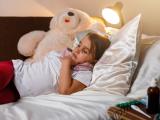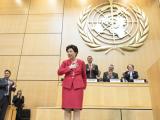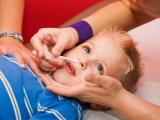Dec 7, 2009
Autopsies show damage to entire airway
In patients who died from novel H1N1 flu, the virus damaged cells throughout the respiratory tract, much as in the 1918 and 1957 pandemics, according to a study released today by researchers from the National Institutes of Health (NIH) and the office of New York's medical examiner. Of the 34 fatal cases studied, evidence of secondary bacterial infection was seen in more than half. Also, 62% of deaths were among those 25 to 49 years old, 91% had underlying conditions, and 72% were obese.
http://www.niaid.nih.gov/news/newsreleases/2009/Pages/FluAutopsy.aspx
Dec 7 NIH release
Deaths, hospital cases high in Illinois minorities
Illinois health officials said the pandemic H1N1 death rate for African-Americans and Hispanics in the state is twice the rate for whites, and the hospitalization rate for the two minority groups is three times as high, the Chicago Sun-Times reported. Dr. Craig Conover of the Illinois Department of Public Health said the reason for the disparities is not clear, but possibilities include more chronic health problems, lower vaccination rates, and less access to healthcare.
http://www.suntimes.com/lifestyles/health/1922501,CST-NWS-flu05.article
Dec 5 Chicago Sun-Times story
Promising Practices adds tools for H1N1 response
A peer-reviewed Web database of pandemic preparedness practices, established by CIDRAP in 2007, today launched a set of public health practices specific to pandemic H1N1 response. For example, it includes tools for managing vaccine clinics and delivering flu information to hard-to-reach groups. It is seeking additional promising practice submissions related to the pandemic. The Association of State and Territorial Health Officials sponsors the project.
http://www.cidrappractices.org/practices/article.do?page=home
CIDRAP Promising Practices Web site
CDC updates home care guidance
The US Centers for Disease Control and Prevention (CDC) updated its home care guidance for people who have pandemic flu. It dropped the previous recommendation that caregivers in close contact with a sick person use a face mask or N-95 disposable respirator. Instead, the CDC recommends that sick people use a face mask if they leave their designated sick room to go to the bathroom or the doctor. If a mask isn't available, the CDC recommends using a tissue to cover coughs and sneezes.
http://www.cdc.gov/h1n1flu/homecare/
CDC updated guidance
Cases in UK drop sharply
Pandemic H1N1 cases in the United Kingdom dropped sharply last week, but Sir Liam Donaldson, the nation's chief medical officer, warned that cases could rise again after Christmas, according to a news story today in the British Medical Journal. Cases dropped to 22,000 in the week ending Dec 3, from 46,000 the previous week. A high rate of hospital cases continues among children under age 5. There have been 270 confirmed H1N1 deaths, and 1,000 people remain hospitalized.
http://www.bmj.com/cgi/content/full/339/dec07_1/b5329
Dec 7 BMJ story
HHS launches flu vaccination ads
The US Department of Health and Human Services (HHS) and the Advertising Council today launched a new public service advertising campaign to encourage pregnant women, children, young adults, and other priority groups to get the pandemic H1N1 vaccine. The campaign features five television ads, three radio spots, and online and outdoor ads created pro bono by the agency Merckley + Partners, according to HHS.
http://www.hhs.gov/news/press/2009pres/12/20091207a.html
Dec 7 HHS press release
Complications threaten kids who have sickle cell
Children with sickle cell disease are more likely to develop serious complication from pandemic H1N1 influenza than for seasonal flu, researchers from Johns Hopkins reported today at the American Society of Hematology meeting in New Orleans. Their review of 118 children with sickle cell who were treated for flu since Sep 1993 found that those who had the pandemic strain were more likely, for example, to develop acute chest syndrome and require a ventilator and blood transfusion.
http://www.hopkinschildrens.org/H1N1-Risky-for-Kids-with-Sickle-Cell.aspx
Dec 7 Johns Hopkins press release
French deaths spark vaccine demand
Media reports of pandemic flu deaths in France have led to a recent surge in demand for the vaccine, the Wall Street Journal reported today. The country began immunizing groups at high risk for complications on Nov 12, but interest in the vaccine had been lukewarm. However, now the country's army is helping manage crowds at vaccine clinics. France has vaccinated 2 million people and hopes to reach 30 million by February. It bought 94 million doses.
http://online.wsj.com/article/SB126013820647379157.html
Dec 7 Wall Street Journal story


















